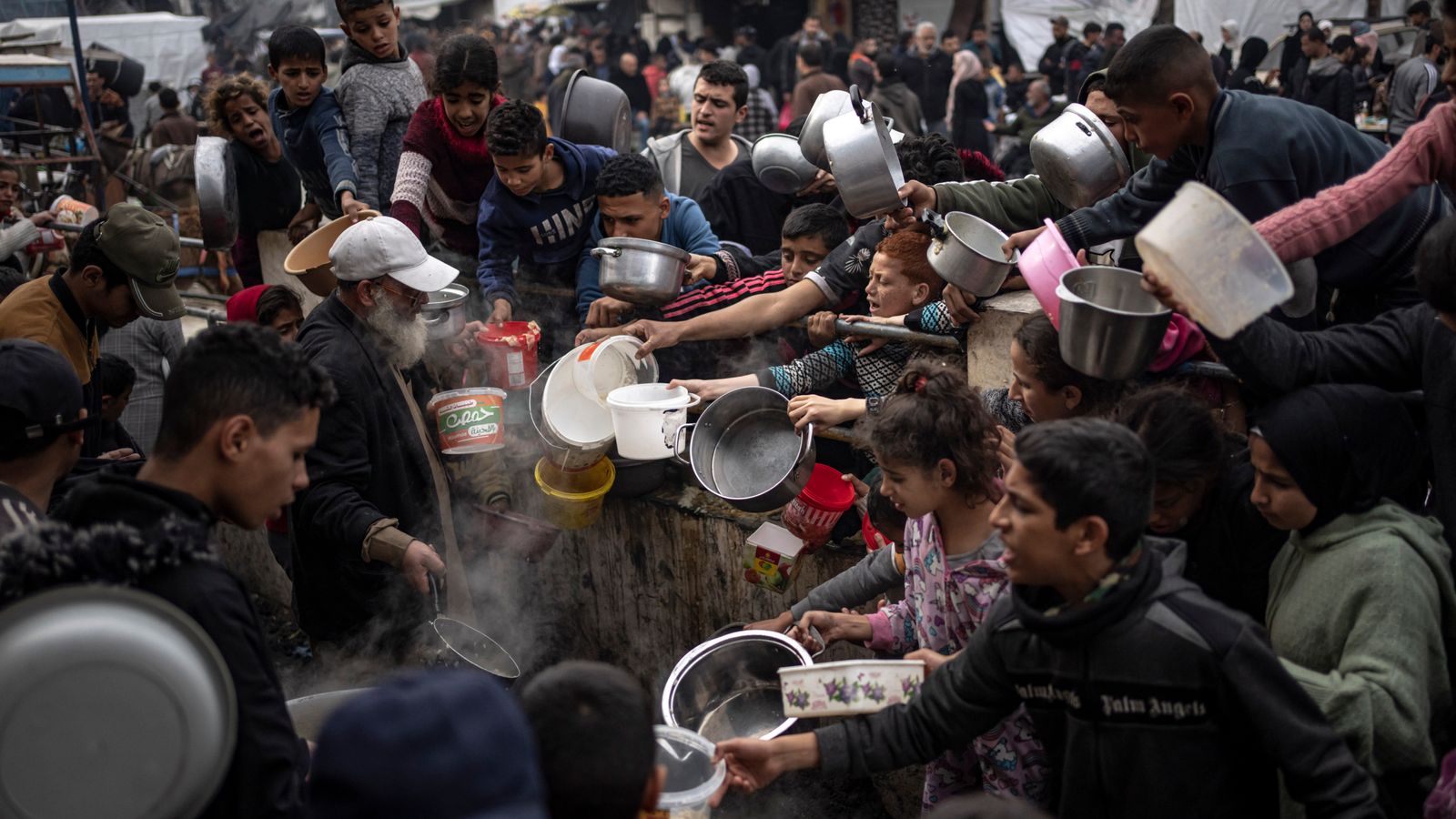Airdrops are a last resort. They are inefficient, inaccurate, expensive and dangerous.
They are only chosen as an option when things are really desperate.
The White House spokesman admitted as much just after President Biden announced that America would carry out airdrops into Gaza.
“There are no missions more complicated than humanitarian assistance airdrops,” Admiral John Kirby said.
Mr Biden’s decision is all the more remarkable because America is dropping aid to counter the consequences of a war being prosecuted with American weapons by one of its closest allies. This is a war run by Israel and enabled by America.
This is not Mount Sinjar in Iraq where the US military airdropped aid into a town besieged by Islamic State in 2014. It’s not Berlin in 1948, blockaded by the Soviet Union.
Israel has near-total military control of the most of Strip. Israel controls the aid that gets into Gaza. It comes in through just two crossings in the south and in what aid agencies and the UN have said are wholly insufficient quantities.
The Erez crossing in the north of the Strip, where people are said to be close to starvation, is shut.
And yet Israel’s army, with its own supplies, passes in and out of Gaza daily through several crossings.
Israel’s security minister said this week that the transfer of humanitarian aid into Gaza is “madness while abductees are still being held”. A plain-sight call for the collective punishment of a desperate population.
America’s decision to airdrop aid into Gaza is a tacit admission of fundamental failure.
It is also unlikely to do much to ease the humanitarian disaster.
Airdrops are inefficient because only small amounts of aid can be dropped at a time – pallets of food parachuted off the back of planes.
Read more:
Exclusive: The company making millions from Gaza misery
Hamas tells Sky News Biden’s ceasefire hopes are ‘wishful thinking’
Biden faces voter backlash over Israel policy
They are inaccurate because you have no control over precisely where the aid will land.
They are dangerous because the aid drops could hit people as they land and because they could cause stampedes on the ground. Usually aid is distributed with the coordination of aid officials on the ground.
They are expensive because they require significant Air Force coordination.
In short – this is a stark illustration of just how much of a [man-made] disaster Gaza now is.
